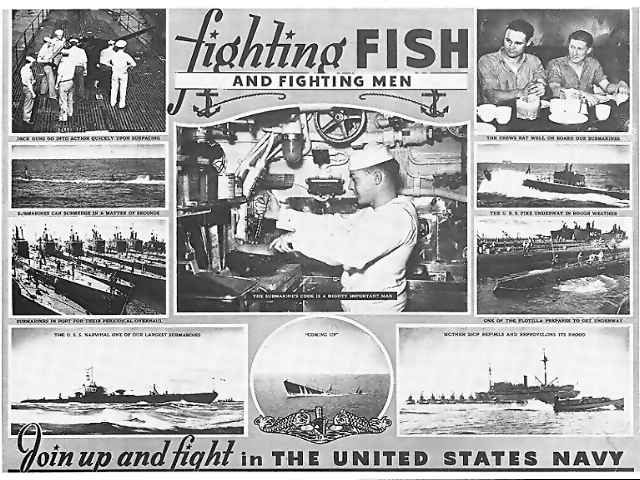


1950 - USS Yellowstone (AD-27) at Augusta Bay Sicily during Mediterranean cruise. The ships alongside receiving repairs are USS Sea Robin (SS-407), USS Torsk (SS-423), USS Sea Leopard (SS-483), and USS Burrfish (SSR-312). This picture was taken shortly before her GUPPY IA conversion in 1951. Also alongside are USS J.R. Pierce (SS-753), USS Barton (DD-722), and USS Shea (DM-30). In the background is USS H.F. Bauer (DM-26).
![]()
The acronym GUPPY stands for Greater Underwater Propulsion Power. At the conclusion of W.W.II, the United States was left with a very modern submarine fleet. Submarines captured from Germany demonstrated the feasibility of the snorkel system, which allowed for greater underwater speed and maneuverability.
Essentially, the GUPPY I program meant streamlining exterior hull surfaces, increasing battery capacity, removal of deck guns, and compartment rearrangements. The first to undergo these modernization's, USS ODAX (SS 484) and USS Pomodon (SS 486) were intended to serve as captive target submarines so that the antisubmarine forces could learn to cope with the advanced types being developed by the Germans at the end of the war. Almost immediately after these conversions, the GUPPY II program commenced, which added the installation of a snorkel system that allowed the diesel engines to be operated while the boat was at periscope depth. Twenty four boats were converted to GUPPY II, about half being Balao Class, and the remaining Tench Class.
In fiscal year 1951, 10 boats were to receive a GUPPY 1A conversion. This conversion was similar to the GUPPY II, but the equipment updates and re-arrangements were not as drastic.
A Poem
by Robert Harrison
GUPPY IA PROGRAM
USS Becuna (SS 319)
USS Blackfin (SS 322)
USS Caiman (SS 323)
USS Blenny (SS 324)
USS Chivo (SS 341)
USS Chopper (SS 342)
USS Atule (SS 403)
USS Sea Poacher (SS 406)
USS Sea Robin (SS 407)
USS Tench (SS 417)